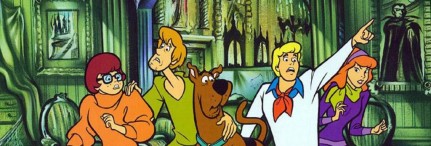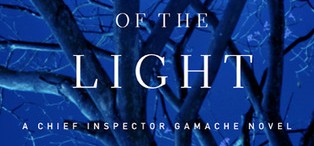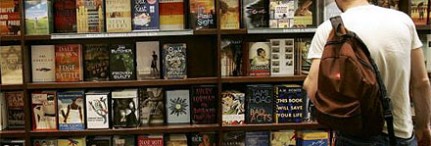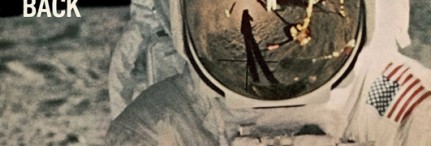I love movies. In fact, before I became a mystery writer, my goal was to be a film critic. I even went to college for it, and while it was fun getting course credit for watching movies, the demand for film critics ranks only slightly higher than that of unicorn wranglers. So I fell into newspapers and, 15 years later, mystery writing.
Still, sometimes those film studies classes come in handy. Right now, I’m writing a piece for Crimespree magazine that requires me to go back and watch some of my favorite movies. It’s been great reconnecting with films I haven’t seen for years, and I’ve picked up on details I missed the first time around.
One movie I watched over the weekend inspired me to start a new occasional feature called Great Shots. My goal is to pick a film and post screencaps from it to illustrate its unique visual style. I won’t be discussing screenplay or acting. (Although both are hugely important.) I’m just going to focus on the eye candy. And the first film I’ll be writing about is the one that inspired this whole thing in the first place: All The President’s Men.
(While I feel incredibly silly posting a Spoiler Alert for something as widely covered as Watergate, it must be noted that I reveal a lot about the movie. If you haven’t seen it yet and want to remain in the dark, here are some cute animals to look at instead.)
While I really dug this movie when I first saw it in a high school history class, I didn’t think its visuals of guys in ties talking on the phone were all that revolutionary. I was wrong, as my recent viewing informed me. Sure, there are a lot of scenes involving Bob Woodward (Robert Redford) and Carl Bernstein (Dustin Hoffman) working the phones, but director Alan J. Pakula and ace cinematographer Gordon Willis employ subtle visuals to suggest mounting paranoia and a cover-up wider than anyone could imagine.
Reporting
My first impression of guys on phones wasn’t entirely wrong, however. The movie isn’t so much about Watergate as it is about two guys stumbling upon the story of a lifetime. There was a lot of grunt work involved, most of it involving Woodward and Bernstein calling sources and getting their facts straight.

While there are a number of close-ups of Redford and Hoffman talking on the phone, Pakula wisely cuts away often, revealing not only the messy vastness of The Washington Post newsroom but its various states of activity. When Bernstein calls former Attorney General John Mitchell, the newsroom is practically empty — ironic, seeing how its when Mitchell gives him one of the greatest quotes in modern journalism.

And then there’s one of my favorite single shots in the film, in which Woodward has a surreal, enlightening conversation with a Republican donor while the rest of the newsroom gathers to watch bigger news behind him. At this point, Watergate is still small-time stuff. The rest of the Post staff is focused on “real” stories.

Another variation on this theme is this two shot in the McDonald’s where Woodward and Bernstein talk over the story. Our protagonists are front and center, but behind them, rows of other people — two sitting, one standing in the background — don’t pay them any attention. Special kudos to Willis and the eerie/cool blueness of the McDonald’s counter, which suggests an endless horizon. There’s a great big world just beyond those walls, and soon they’re going to know what Woodward and Bernstein are talking about.

Finally, no discussion of All The President’s Men would be complete without mentioning this justifiably famous shot from the Library of Congress. Woodward and Bernstein have just been given files that list all the books the White House has requested. The stack is huge, and they dive in. As they flip through the pile, the camera rises in a series of dissolves until the reporters are mere specks just left of center near the top of the frame. What starts off as a “Hey, look at me!” showboating shot becomes a chilling visual that suggests something much bigger than Woodward and Bernstein thought possible.
Sources
Once Woodward and Bernstein hit the streets to interview potential sources, the film is shot almost like a police procedural. There are cramped conversations in moving cars. Wide shots of the reporters standing in front of elegant houses as doors are slammed shut.


Those sources who don’t slam doors are either partially hidden behind them or obscured by staircases and corners, suggesting the truth is there but just agonizingly out of reach.


When Woodward and Bernstein finally get to sit down and talk to some, the sources are backed subtly into corners or up against walls. The shot above, with Jane Alexander as a bookkeeper who knows too much, is lit like an interrogation scene, with an offscreen key light casting shadows on the wall behind her.
Televisions
All The President’s Men is first and foremost a movie about the news business. But, of course, it’s also about Nixon. (The second shot of the movie is footage of Nixon preparing to address Congress.)


During the events of the film, he was running for re-election. The movie doesn’t spend a great deal of time on this fact. Instead, Pakula wisely tells us what we need to know via footage of the president on televisions scattered around the newsroom. The top shot is from the Republican National Convention. The bottom one, the last time we see Woodward and Bernstein, is Nixon taking the oath of office.
Although single compositions, both of these shots serve as ironic split screens. We’ve got two political high points for Nixon presented simultaneously with Woodward and Bernstein typing away at the articles that will eventually bring about his resignation. The official view and the backstage view. Present and future.
Deep Throat
Now, it’s time to talk about Deep Throat, the most memorable aspect of All The President’s Men and the book on which it was based. Until 2005, when he was revealed to be former FBI official Mark Felt, the identity of Woodward’s anonymous source was one of history’s most tantalizing mysteries. The movie, with its illicit meetings and shivery trappings of espionage, played a large part in creating the Deep Throat myth.

In the movie, Woodward meets Deep Throat at night in a parking garage, once again expertly lit by Willis. I love this shot of Redford first seeking out his source. We get the full scale of the garage and see all the places where Deep Throat (or someone more sinister) could be hiding. Even better, the grid-like ceiling and rows of support columns bring to mind the Post newsroom.

The garage is a funhouse mirror of the newsroom. Like Alice, Woodward has officially stepped through the looking glass.

Later in the film, the garage takes on a distinctly film noir feel as the story starts to spiral out of control. Woodward waits at the front of the forbidding row of columns as our gaze shoots down the open space on the right. At any time, someone could lurch into frame and spell doom for our hero.

As for Deep Throat himself, we first see him as a barely perceptible figure blending in with the darkness of the garage. We aren’t even fully aware someone is there until he lights his cigarette. He’s a nameless, faceless shadow. A benevolent bogeyman occupying a dark corner of the American consciousness.

Pakula’s master stroke in All The President’s Men was to show Deep Throat, but just barely. Again, Willis’ work here is brilliant, using backlighting to obscure most of his face, while aiming the faintest of lights on his eyes. The movie doesn’t hide the fact that Deep Throat is played by Hal Holbrook, whose name is featured prominently in the opening credits. But Pakula and Willis cover Holbrook up just enough so that if you’re not familiar with his name or voice, there’s a lingering doubt about his true identity.
Typewriters
For a movie about the process of getting and writing a story, All The President’s Men makes great use of typewriters and the act of typing itself.

The first shot of the film is a lengthy and silent close-up of a blank sheet of paper. Suddenly, letters start to appear as keys smash against the paper with a loud — and startling — thunder. History is about to take place.

A typewriter plays a key part in a scene near the end of the movie, after Deep Throat has warned Woodward that their lives might be in danger. Fear of bugging prompts he and Bernstein to type their conversation as classical music plays.

We get typing again in the film’s final shots — the mechanical rap of a wire service machine printing out the news that Richard Nixon has resigned. The letters fly fast and furious, sounding almost like machine gun fire. This is no longer Woodward and Bernstein’s story. It’s now America’s story, and one for the history books























